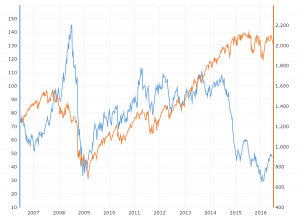- Harvest the body heat
Many large cities have implemented heat recovery projects in their major metro systems. Millions of passengers, as well as train motors and brakes, operate in a closed metro environment creating extreme heat.
The railway operators are also aware of the heat problem since they have to spend a lot of money to remove the heat from the normal way. However, metro operators are turning this excess heat into something efficient: power Green Mountain Energy rates and heating for local homes and businesses. In London, hundreds of homes around Highbury Islington are part of London’s underground heat recovery scheme, while similar schemes exist across Europe. But it’s not just the underground metro system that collects and transforms heat. For example, the 2.5 million square foot shopping mecca, Mall of America, uses light generated by the sheer volume of people passing through it. The fire combats Minnesota’s often harsh winters — so much so that the home doesn’t have a traditional central heating system — a new concept for developers, since the early 1990s.
- Alcohol held
When life gives you lemons, squeeze the lemons using the power train.
Swedish customs officials confiscate hundreds of thousands of illegal wines every year. Instead of throwing everything in the water, which is a waste, why not turn it into something useful?
Together with Svensk Biogas AB, the Swedish customs company intends to continue to convert this free resource into electricity as long as traders try to exceed the limits. As of 2013, the cars of more than a dozen cities in Sweden run on biogas, although not all of it is from alcohol.
- Used adult’s Diaper
The Japanese population is aging rapidly. While Japan’s aging population may be a broader economic concern, Super Faiths Inc.’s new SFD manufacturing system. considers weight as an energy solution and is an attractive alternative for generating electricity. SFD’s recycling system takes the used towels, then stacks, shreds, and dries them in their licensed machine, returns biomass pellets ready to burn in a suitable oven, and returns the to 5,000 kcal per kilogram converted.

Not a good return for useless waste. Able to “repair” about 700 pounds of used diapers per day, the system could find its way into nursing homes and large hospitals.
- On the dance floor
The kinetic energy we deal with every day is becoming tangible as train stations, nightclubs and gyms are starting to use piezoelectric harvesting technology. Piezoelectricity is produced in some crystals in response to compressive forces. If you have a surface that moves for some reason, you can put a piezoelectric crystal on it and remove a small amount of energy.
The accumulated electrical energy can be used to power a home or district or be transferred to a new location. Piezoelectricity is not entirely new, with DARPA investigating piezoelectric generators in military boots.
However, we use piezoelectricity more often than you might think: an electric current consists of a piezoelectric crystal that has a high voltage to ignite a gas, which produces electricity. In the forest, we found Tokyo Station powering its ticket conversion and the world’s first sustainable hotel in Rotterdam, the Netherlands. Piezoelectric motors are also entering the railway sector. In collaboration with Technion University and the renewable energy company Innowatech, Israel Railways installed 32 piezoelectric energy harvesting devices on the side of the busy railway, consuming about 120 kWh, enough to make traffic lights and track systems.
